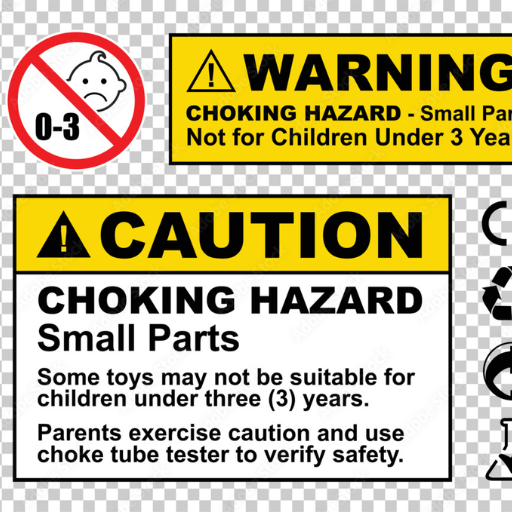
Thank you for reading our essential guide on warning choking hazards in small parts, which have warning labels for choking hazards posed by small parts. I am sure this part will give you crucial knowledge and insights to protect your loved ones, particularly children. In this part, we will discuss the different aspects of warning choking hazards in small parts, as well as its warning signage and effective ways to minimize the risks. If you are parenting, taking care of someone, or are an interested individual, this comprehensive guide will help you make decisions and ensure safety. I will give insight into what warning choking hazards are in small parts and how to minimize risk for yourself and others around you, so let’s get started.
 A choking hazard refers to any small object that can block the airway and impair breathing. Young children under three are especially vulnerable because they tend to explore objects with their mouths. Common choking hazards include:
A choking hazard refers to any small object that can block the airway and impair breathing. Young children under three are especially vulnerable because they tend to explore objects with their mouths. Common choking hazards include:
 One of the primary concerns that should be addressed is identifying the products labeled with ‘may pose choking hazard’ for the purpose of safety, especially that of young children. Please note the following important features:
One of the primary concerns that should be addressed is identifying the products labeled with ‘may pose choking hazard’ for the purpose of safety, especially that of young children. Please note the following important features:
 Nonsuprisingly, the regulations for small parts in toys and products are not only wise but crucial in safeguarding children. The policies within Section 16 C.F.R., which the Consumer Product Safety Commission (CPSC) has provided, should be implemented so that the risk of choking by small components is handled appropriately. The purpose of these rules is to ensure that young children do not swallow or breathe in such small items, which can cause suffocation. It is also important that manufacturers and retailers adhere to these guidance so that any toys or products meant for children do not have parts that can be choked by a child. This will also enable parents and guardians to rest easy as the policies guarantee that the products selected for children are both suitable and safe.
Nonsuprisingly, the regulations for small parts in toys and products are not only wise but crucial in safeguarding children. The policies within Section 16 C.F.R., which the Consumer Product Safety Commission (CPSC) has provided, should be implemented so that the risk of choking by small components is handled appropriately. The purpose of these rules is to ensure that young children do not swallow or breathe in such small items, which can cause suffocation. It is also important that manufacturers and retailers adhere to these guidance so that any toys or products meant for children do not have parts that can be choked by a child. This will also enable parents and guardians to rest easy as the policies guarantee that the products selected for children are both suitable and safe.
 Parents can minimize choking risks by adopting these simple yet effective safety practices:
Parents can minimize choking risks by adopting these simple yet effective safety practices:
 Choking hazard stickers are an essential part of child safety around toys and other products, and this is based on the fact that these stickers address any potential choking hazards that threaten children. These stickers alert parents, guardians, and retailers about risks related to small parts or objects that may pose a choking danger. Marketing techniques that involve placing such toys in packaging with these stickers are beneficial as they promote the message when making age-appropriate toys for children. The stickers provide a warning that advises the consumer against quick response and that very close supervision of young children is required to avoid choking complications. Finally, stickers marking the choking hazard on the toys are a step in the right direction in promoting the safety of the children's environment and their health.
Choking hazard stickers are an essential part of child safety around toys and other products, and this is based on the fact that these stickers address any potential choking hazards that threaten children. These stickers alert parents, guardians, and retailers about risks related to small parts or objects that may pose a choking danger. Marketing techniques that involve placing such toys in packaging with these stickers are beneficial as they promote the message when making age-appropriate toys for children. The stickers provide a warning that advises the consumer against quick response and that very close supervision of young children is required to avoid choking complications. Finally, stickers marking the choking hazard on the toys are a step in the right direction in promoting the safety of the children's environment and their health.
Understanding Choking Hazards: What You Need to Know
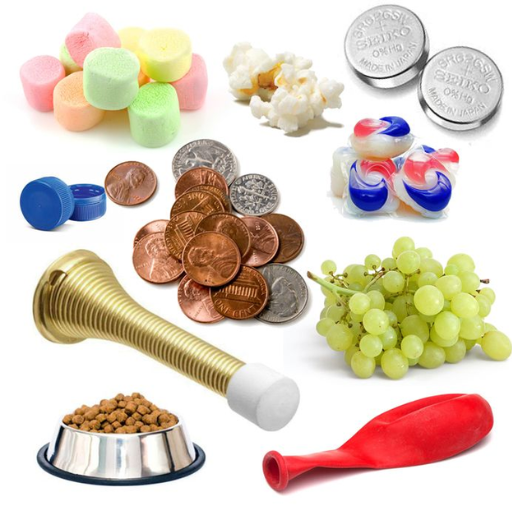 A choking hazard refers to any small object that can block the airway and impair breathing. Young children under three are especially vulnerable because they tend to explore objects with their mouths. Common choking hazards include:
A choking hazard refers to any small object that can block the airway and impair breathing. Young children under three are especially vulnerable because they tend to explore objects with their mouths. Common choking hazards include:
- Buttons, batteries, and magnets.
- Small toy parts, coins, and beads.
Understanding Small Parts and Their Risks
I appreciate the need to inform of the dangers that small parts and small objects can be. Small parts, for instance, constitute a very serious danger, especially to children who are below the age of 3, since they are small enough to be completely placed in the mouths of young children, increasing the risk of choking. Therefore, it is of utmost importance to appreciate the small size of inanimate objects and the fact that they can cause choking on air passages. With sufficient knowledge about choking hazards and the necessary measures, a lot of people, especially children, can be kept safe through these measures. It is, hence, important to explore small parts further and other related dangers they pose.Why Choking Hazard Labels Are Crucial?
Choking hazard labels play a vital role in informing consumers and preventing accidents. These labels warn about potential dangers and ensure safe handling of small parts. Key features of choking hazard labels include:- Clear Warnings: Labels often state “Choking Hazard” or “Not for children under 3” to specify risks.
- Visual Symbols: Icons such as a red circle with a line through a child’s face help parents identify dangers quickly.
- Regulatory Compliance: Labels comply with federal standards like the 16 C.F.R. guidelines, ensuring toys meet safety protocols.
Why Children Under 3 Are Most at Risk
I will explain why it is mostly young children below the age of 3 years who are at the highest risk of choking incidents. Comprehending the causes of this risk is critical for parents and other caregivers in order to take appropriate measures. Such elements include the following factors which raise the likelihood of such events occurring in young children:- Size of Airway and Chewing Abilities: The airways of children and toddlers (3 years old and below) may be small, and so are the chewing capabilities, which are not yet fully developed in comparison to older children and adults. This means that small objects would be able to find their way into the child s throat and get stuck therefore blocking the airways which is the cause of choking hazards.
- Tendency to Explore with Mouths: Little children are in a stage of development during which they are very much curious, all the things that they see they put in the mouth including strange objects. It leads to a higher chance of more small things being swallowed therefore posing danger of choking.
- Limited Ability to Recognize and Respond to Danger: A child that falls under this group of the baby is likely to have no knowledge of what it means to choke or the fact that most items they play with could pose a danger, and even if the children were in danger they would not be able to pull the item from the mouth or search for help in cases where laryngeal obstruction such as choking takes place.
- Supervision: Young children, especially during playtime and while they are eating, should be under adult supervision.
- Age-Appropriate Toys: Purchase toys for them that are age-appropriate and do not contain loose small bits that can be pulled off.
- Proper Storage: Young children should not be able to get near small objects like coins, batteries, buttons, small toys, and their accessories.
- Educate Caregivers: Manage toddlers on the practices of choking hazard and such prevention measures and inform their caregivers such as grandparents and babysitters.
How to Identify Products with Choking Hazard Warning Labels?
 One of the primary concerns that should be addressed is identifying the products labeled with ‘may pose choking hazard’ for the purpose of safety, especially that of young children. Please note the following important features:
One of the primary concerns that should be addressed is identifying the products labeled with ‘may pose choking hazard’ for the purpose of safety, especially that of young children. Please note the following important features:
- Decoding Choking Hazard Stickers: All choking hazards are presented through stickers or labels on many products including toys and any small accessories. Such markings usually provide a warning about small parts, and sometimes, this warning is illustrated by a child’s head silhouette x’d with a red circle. Take note of such labels as they provide a risk that children might choke on the items.
- Spotting Warning Signs on Packaging: Warning signs are put on the packs by the producers so that the consumers are aware of the risk of choking related to it. Look out for such writings as “choking hazard” , “small parts” , “not for children below the age of three” . Such makings are meant to show that the item has small particles that can be choked by children.
- Understanding Safety Tags and Their Importance: Some products are bound to have safety tags, which are other risks for necking over such products. These tags may identify different choking tendencies of the specific product associated with those items, the age limit, and the degree of supervision of children required for those items.
Decoding Choking Hazard Stickers
Allow me to offer you some guidance on how to make sense of those rather puzzling choking hazard symbols that can be seen on many toy packages. The purpose of these stickers is to warn parents and other individuals looking after children of certain toys or certain products that cause aspiration problems. They are placed on the product to assist consumers in making the right choices when it comes to toys for small children. Now, let’s examine the meaning of those choking hazard stickers and how they should be deciphered.Spotting Warning Signs on Packaging
I am glad to provide perspectives on how to identify warning signs on packaging and the need for safety tags. In regard to toy packaging, there are specific signs and symbols that warn of choking dangers. Let us go into the details:- Age Recommendations: The first thing you should look for on the packaging of the toy is an age recommendation, if any. This is normally given in ranges or specific numbers. It is important to avoid neglecting these recommendations as such have been formulated for safety and developmental levels of children.
- Small Parts Warning: Any toy that has small parts is a potential choking risk to little children. Seek to have either a warning symbol or specific labels that are inscribed as “small parts or even choking hazards” .These warnings are often accompanied by text that detailing what small parts are especially dangerous.
- Balloon Warning: Balloons are also a choking hazard during playtime for younger children or infants. It is, however, necessary seek phrases such as “Contains balloons”, which may suggest the toy is unsuitable for children under a specific age. It is also necessary to pay attention to which age balloon should not be given to children to avoid choking risks.
Understanding Safety Tags and Their Importance
In the same manner that foodstuffs have expiry dates and toxic materials have warning signs, safety tags are used on toys and products for children as protective measures. These tags are also important in providing the parents or guardians with information concerning the appropriate age for the toys and possible choking hazards. Let us look at some of the important issues to be considered:- Regulations for Small Parts in Toys and Products: There has been a regulation on the allowable level of safety of toys and products, including toys and children's product safety standards, for example. These sorts of regulations help to avert choking incidents as well as safeguard children’s welfare.
- Implications of the Small Parts Ban: The restriction of small parts in toys is necessary in order to minimize the risk of choking. It makes sure that toys for children below a certain age do not contain small parts that could easily be swallowed or stick in a child’s airway.
- Compliance with 16 C.F.R Guidelines: The small parts regulations and test procedures are formally established in Canada under the Code of Federal Regulations 16 C.F.R (16 C.F.R). As these guidelines form the conditions for compliance that determine child safety factors in terms of toy features, manufacturers and or sellers are strictly advised to follow these.
What are the Regulations for Small Parts in Toys and Products?
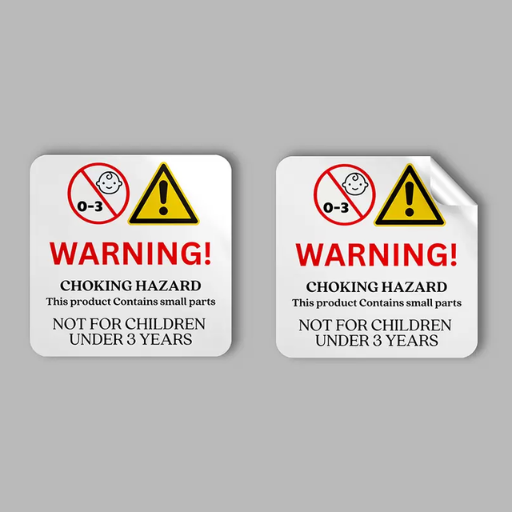 Nonsuprisingly, the regulations for small parts in toys and products are not only wise but crucial in safeguarding children. The policies within Section 16 C.F.R., which the Consumer Product Safety Commission (CPSC) has provided, should be implemented so that the risk of choking by small components is handled appropriately. The purpose of these rules is to ensure that young children do not swallow or breathe in such small items, which can cause suffocation. It is also important that manufacturers and retailers adhere to these guidance so that any toys or products meant for children do not have parts that can be choked by a child. This will also enable parents and guardians to rest easy as the policies guarantee that the products selected for children are both suitable and safe.
Nonsuprisingly, the regulations for small parts in toys and products are not only wise but crucial in safeguarding children. The policies within Section 16 C.F.R., which the Consumer Product Safety Commission (CPSC) has provided, should be implemented so that the risk of choking by small components is handled appropriately. The purpose of these rules is to ensure that young children do not swallow or breathe in such small items, which can cause suffocation. It is also important that manufacturers and retailers adhere to these guidance so that any toys or products meant for children do not have parts that can be choked by a child. This will also enable parents and guardians to rest easy as the policies guarantee that the products selected for children are both suitable and safe.
Overview of Consumer Product Safety Standards
I acknowledge the absolute necessity of following the standards for safety for the consumers related to the toys and products for children, for instance, the norms stated in 16 C.F.R guidelines. After all, children’s safety and security by avoiding risks of choking is the reason for there being such standards in the first place. The manufacturers and retailers are responsible for this compliance first to ensure the toys and products designed for children are not larger than small parts that can be choked on or aspirated. With such restrictions in place, mothers and caregivers can be relaxed and be sure that any toys or products they get their children are safe for the relevant age and they pose little if any risk of choking.Implications of the Small Parts Ban
In regards to child protection, the implications surrounding the ban on the ‘small parts’ policy is something that, like myself, I am aware of. The ban, which is reinforced through the guidelines of 16 C.F.R., is aimed primarily towards children and extends to toys and other products aimed at preventing the choking hazard that can arise from the presence of small parts on such wares. Here are some of the key implications accompanying the small parts ban:- Enhanced Safety: The enforcement of the ban provides guarantees assuring buyers that all toys and other goods present in the market were made with the conception, design, and manufacturing processes molded with child safety as the target within those goods. Due to the reduced amount of small parts that pose limits for choking, the play environment is indeed more secure by manufacturers and retailers.
- Peace of Mind for Parents and Caregivers: The further demonstrable results of the small parts can lead to the parents and the caregiver's delight. From the earlier outlined details, the toys and the products selected for them guarantee that they are safe from being choked upon, and for such mothers, the selected goods are perfect for protecting their children, and they, therefore, can spend peace time with their kids.
- Reduced Choking Incidents: All the potential stakeholders have a responsibility to comply with the stipulated safety guidelines in this case which aids in reducing the cases of choking frequency which affects the children. This in the long run is aimed at enhancing the overall health and well being of a child in that it helps to prevent atrocities of incidences and injuries.
Compliance with 16 C.F.R Guidelines
In adhering to the guidelines of 16 C.F.R families are able to protect their respective children from the risk of choking by following those instructions again these instructions set forth some specific measures and principles to be observed by manufacturers and retailers as well as parents in order to ensure that the younger generation receives suitable and secure items. The involvement of various stakeholders in compliance is discussed as follows:Manufacturers:
- Make it certain that products designed for the use of children aged three and below do not have any small pieces that are a choking danger.
- Carry out sufficient tests and assessments on products to ensure that the rules have been followed.
- Affix clear age restrictions to products as a guide for parents and guardians.
Retailers:
- Work in tandem with the producers to ensure that the products being stocked and verified are as per the requirements of 16 C.F.R
- Ensure that the packaging of the products shows the recommended age limit for use as well as the hazards of such products choking users.
Parents:
- To select safe items for their kids, parents must carefully read the age guidelines indicated on the toy boxes.
- Regularly checking toys and other items will allow the parents to identify components that are coming loose or that might be potential risks of choking.
- Always ensure that small objects are kept out of children's mouths, for this actually helps in advance supervision in the child’s playtime.
Essential Safety Tips to Reduce Choking Risks at Home
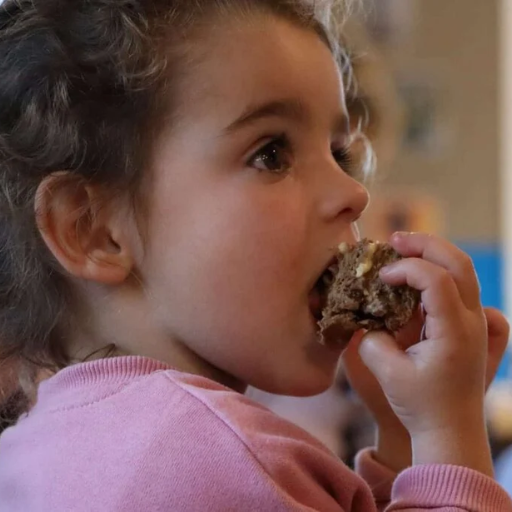 Parents can minimize choking risks by adopting these simple yet effective safety practices:
Parents can minimize choking risks by adopting these simple yet effective safety practices:
- Supervise Closely Always watch children during meals and playtime to intervene quickly if a choking risk arises.
- Secure Small Items Store objects like coins, beads, or batteries in places beyond the reach of children.
- Choose Safe Toys Look for age-appropriate toys labeled as "safe for children" and avoid those with small detachable parts.
- Keep Up with Product Recalls Regularly monitor the Consumer Product Safety Commission (CPSC) website for recalls of unsafe toys or child products.
Effective Ways to Keep Away from Children
I am well aware of guaranteeing child security and reducing child choking risks. Note the following suggestions, which seem to be effective measures to keep young children safe:- Supervise: While always being engaged in an activity, perform a keen observation of each of the children, especially at mealtime or when using small pieces that they might choke on. With proper supervision, choking incidents could be minimized, for example.
- Choose Age-Appropriate Toys: Buy toys that are designed for the child's age and size. Avoid toys with detachable small parts, as they can easily be put in the mouth and swallowed or even pose a risk of choking.
- Secure Furniture and Appliances: Secure all heavy-duty furniture, bookshelves, and appliances so they do not tumble. Safety straps, anchors, or brackets should be used to secure these objects to the wall in order to reduce the risk of injuries.
- Stay Informed: Look for essential recalls and safety notices for all products. Also, make sure to visit the CPSC's official website often to learn more about possible toys or other products that might present choking risks.
Choosing Products Suitable for Children Under Three
Picking age-appropriate products for children under the age of three seems to be the first thing that warrants attention to secure their health. There are some issues that parents must look into when buying toys and other such items for young children:- Age Appropriateness: Check the recommended age on the package to confirm the existence of a child under three years of age. Toy developers segment them into specific age categories, considering the stages the children have achieved and the risks they pose. These should be embraced at all times to select products that are appropriate for the children’s age.
- Size and Shape: Use large enough toys that cannot be swallowed or stuck in a child’s throat. Small parts or items which are easy to break off are dangerous since they can cause choking. The form of the toys should be noted as well, such that no minor or detachable parts can pose a risk.
- Materials and Construction: What materials were used to manufacture the product in the first place? Toxic materials should be avoided, and safety standards should be observed. Such items incorporate sharp edges, loose strings, and small, strong magnets, which are harmful if swallowed.
- Safety Certifications: The CPSC and the ASTM certification should also be sought. These certifications clearly state that the product has been tested and meets some required safety standards.
- Supervision and Monitoring: Remember that supervision is critical even with developmentally appropriate toys. Types of toys that are worn out, damaged, or in bad shape should be routinely examined and removed. Infants and preschool children should constantly be monitored when playing.
Creating a Safe Environment for Small Children
One of the primary goals when designing for young children’s use is to ensure their safety and avert probable risks. On examining toys and other articles for children below three years, there are some basic considerations:- Age Appropriateness: You should be mindful of the recommended age for children while buying toys. Many toys have age recommendations on their packaging. The requirements are laid down to ascertain that the toy is child-friendly about development and choking danger.
- Size and Shape: Most of my clients would enumerate the toy’s size and shape as the first and most important consideration. Smaller parts that are easily swallowed or inhaled are especially concerning. For instance, toys with small attachable parts or that can fit through the hole of a toilet paper roll make it easy for kids to choke.
- Construction and Durability: Children’s toys must be safe in construction. For this simple reason, they must be strong and well-made. Children must not use toys that contain small or fragile parts because these can break and become dangerous choking hazards.
- Safety Standards: While choosing toys, you should always look out for safety certifications such as ASTM International (American Society for Testing and Materials), CPSC (Consumer Product Safety Commission), and others. It’s important to note that the products possessing the certificates have passed tests proving they are safe.
- Supervision and Monitoring: One would think that age-appropriate toys don’t require much supervision, but that is not the case. Newspapers and magazines should always be checked for any toys that might have worn out and should be thrown away if found in such condition. Young children should always be supervised when playing with toys to ensure no accidents occur.
Why Are Choking Hazard Stickers Crucial?
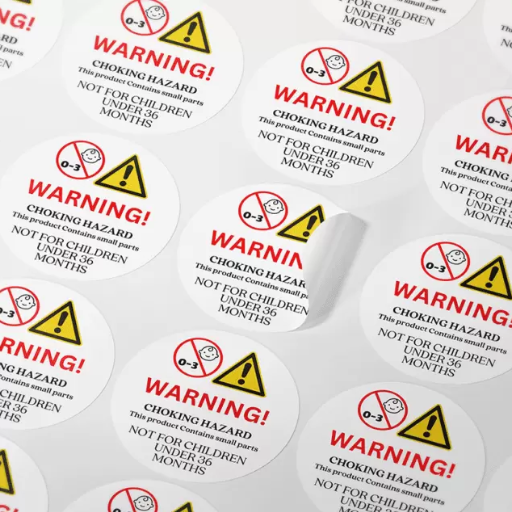 Choking hazard stickers are an essential part of child safety around toys and other products, and this is based on the fact that these stickers address any potential choking hazards that threaten children. These stickers alert parents, guardians, and retailers about risks related to small parts or objects that may pose a choking danger. Marketing techniques that involve placing such toys in packaging with these stickers are beneficial as they promote the message when making age-appropriate toys for children. The stickers provide a warning that advises the consumer against quick response and that very close supervision of young children is required to avoid choking complications. Finally, stickers marking the choking hazard on the toys are a step in the right direction in promoting the safety of the children's environment and their health.
Choking hazard stickers are an essential part of child safety around toys and other products, and this is based on the fact that these stickers address any potential choking hazards that threaten children. These stickers alert parents, guardians, and retailers about risks related to small parts or objects that may pose a choking danger. Marketing techniques that involve placing such toys in packaging with these stickers are beneficial as they promote the message when making age-appropriate toys for children. The stickers provide a warning that advises the consumer against quick response and that very close supervision of young children is required to avoid choking complications. Finally, stickers marking the choking hazard on the toys are a step in the right direction in promoting the safety of the children's environment and their health.
The Importance of Adhesive Labels on Toys
Adhesive labels on toys are one of the critical mechanisms through which the welfare of children is protected. Here are some basic facts that explain why such labels are essential:- Safety Awareness: The reverse side of the toy or adhesive labels can include choking hazards, suffocation warnings, and other labels that alert consumers to certain dangers of children associated with specific types of toys. These indicate the age appropriateness and risks associated with a particular toy.
- Informed Decision-making: Parents, caregivers, and some consumers can select children’s toys better since these labels contain essential information on the toys. Where potential dangers exist, the appropriate label containing safety advice should be attached to the toy, and this informs the public about the hazards and the means of control needed.
- Prevention of Accidents: Adhesive labels on toys play an essential role in preventing any accident. Such information located on such labels can assist parents and other caregivers in the prevention of dangerous situations by outlining the risks of small parts, choking, or suffocation during the use of toys designed for toddlers.
- Legal Compliance: Adhesive labels on toys must be applied in case regulatory authorities require them to ensure safety and quality standards. To maintain the safety of all children and also the required standards of the quality of the product, manufacturers and retailers must follow these regulations.
Enhancing Awareness through Suffocation Warning Labels
I can elucidate the need for putting suffocation warning labels on toys and their value in increasing awareness and ensuring children's safety. Suffocation warnings are significant for caregivers so that they can take appropriate measures during playtime. Some of the things to consider are:- Identifying Potential Hazards: Suffocation warning labels are an effective tool for parents and caregivers to identify potential choking hazards or suffocation risks posed by certain toys. These labels also serve to caution people to evaluate whether such a toy is appropriate for a child based on the child’s age, maturity, and skill level.
- Safety Precautions: Suffocation warning labels have also been developed because such warnings are effective in giving advice on how children’s toys should be used and how to handle them. To illustrate, parents may be told to prevent children from being in contact with plastic bags to diminish chances of suffocation. In this way, parents’ observance of such cautions can help cut down the chances of accidents in the play area.
- Age Recommendations: Many toys might not be appropriate for children under a specific age, thus the suffocation warning labels may incorporate such age endorsements. Such information will enable parents to pass sound judgment when choosing toys for their young ones. Such recommendations by age are key in helping to avoid possible risks while ensuring that children enjoy themselves while playing.
- Legal Compliance: Suffocation warning labels are among the requirements of laws put forth by regulatory agencies in an effort to maintain safety. These regulations have to be followed by both manufacturers and retailers to ensure that children are not harmed in any way by the products and that the final product is of good quality. Adhering to these standards means that the industry also ensures crisis testing of the toys and control as far as safety guidelines are concerned.
The Function of Choking Hazard Warning Labels in Retail
I wish to explain the purpose and importance of choking hazard warning labels in the retail business. Firstly, such labels play an important role in enhancing the safety of children in the economy as well as informing parents and caregivers about the dangers posed by particular toys. For better comprehension of dangers, here is a summary of their role:- Risk Awareness: The goal of putting a choke hazard warning label on small parts or components is to sensitize people to the risks of choking for little children. These easy- to- read alerts placed on the packaging help parents and guardians to determine toys with likely threats easily.
- Age Recommendations: There are instances younger children could be exposed to choking hazard warning labels agian there is an instruction on their use indicating that children of younger age should not use these toys. These recommendations specify the age range for which toys should be used basing on its design features. Following these ages’ recommendations is very crucial in not exposing children to these hazards and making play safe.
- Parental Responsibility: Choking hazard warning labels also stress the role they give to the parents in terms of supervision. They provide a gentle reminder to the caregivers to keep watch of their child during play and to ensure that the toys given are right for that specific child. It is of paramount importance that adherence to these age recommendations is complied with to avoid worst-case scenario effects of hazards during play.
- Legal Compliance: They also highlight that providing suffocation warning labels is an industry requirement that must be adhered to by the concerned authorities. All of these rules must be followed by manufacturers and retailers in order to keep children safe and the product quality high. Fulfilling these criteria guarantees that all toys have undergone extensive care and passed inspection rules.
Reference
- Small Parts Ban and Choking Hazard Labeling | CPSC.gov - This source provides detailed information on the regulations and guidelines for small parts in toys and children's products.
- Small Parts and Choking Hazard Labeling FAQs | CPSC.gov - This FAQ section addresses common questions about small parts and choking hazard labeling, offering insights into safety standards.
- Choosing Safe Toys for Toddlers and Preschoolers | KidsHealth - This article discusses how to choose safe toys for young children, including the use of small-parts testers to prevent choking.
Frequently Asked Questions (FAQs)
What does a choking hazard label mean, and why is it important?
Choking hazard labels warn about small parts that may block a child's airway if swallowed or inhaled. These labels help parents avoid giving unsafe items to kids under 3 and ensure manufacturers follow safety regulations.
How can I interpret choking hazard warnings?
- Look for phrases like "small parts" or age restrictions.
- Pay attention to symbols such as crossed-out baby icons.
- Always follow the instructions on the packaging.
What should I do if my child chokes?
- Perform back blows and chest or abdominal thrusts, depending on their age.
- Call emergency services if the object isn’t dislodged.
- Learn CPR or basic first aid to stay prepared.
How can I reduce choking risks at home?
- Keep small items like coins, magnets, and batteries out of reach.
- Check toys for loose or broken parts regularly.
- Supervise children during play and meal times.
How can I teach my child about choking hazards?
- Use simple rules, like “No toys in the mouth.”
- Supervise playtime and remind them about safe habits.
- Reinforce these lessons consistently to build awareness.
Where can I learn more about choking hazards?
Visit the Consumer Product Safety Commission (CPSC) website for updates on product recalls and safety guidelines. Consider enrolling in a child safety course for hands-on learning.
1717



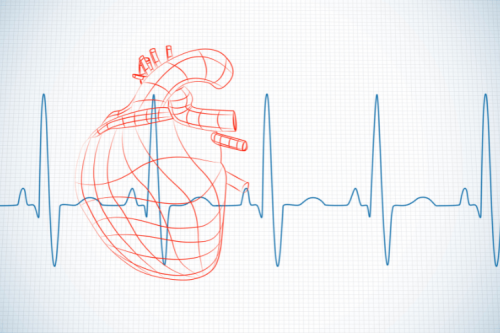


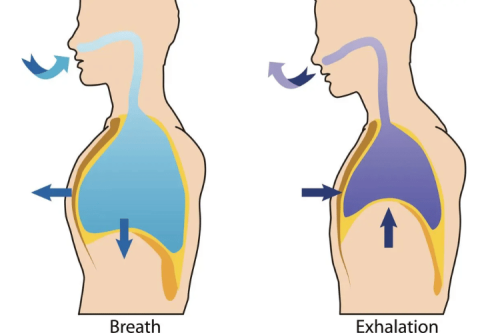

 Login with Google
Login with Google Login with Facebook
Login with Facebook